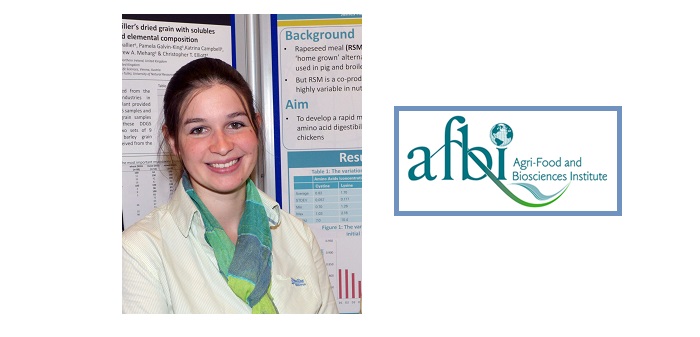Research at the Agri-Food and Bioscience Institute (AFBI) in Northern Ireland has resulted in sows achieving wean litter weights of over 115kg at 28 days of age and pigs with low birth weights hitting feed efficiency ratios under 2.4 during the finishing period.
This compares with commercial litter outputs in NI which rarely exceed 105kg and an average feed efficiency in finishing pigs of approximately 2.7.
The superior performance outputs achieved at AFBI have been welcomed as demonstrating the potential that both sows and low birth weight pigs can achieve. Produced by AFBI Hillsborough post-grad, Dr Aimee Louise Craig, the research findings are calculated to be capable of yielding an extra performance value of at least £1m, if applied across the NI pig industry.
With significant increases in litter sizes over recent years having led to reduced piglet birth and wean weights, Dr Craig decided to look at how the development of nutritional and managerial strategies might impact on this issue.
Funded by the NI Department of Agriculture, Environment and Rural Affairs, she began by investigating the effect of a range of energy and protein levels in the diet as well as different feed levels during lactation.
When, for example, a base (control) diet was offered (13.6 MJ DE/kg; 1% total lysine, intake of 7.5kg/day), sows produced a litter weight of 101 kg over a 28 day lactation. However, when a diet containing 14 DE MJ/kg and 1% total lysine was fed at the same intake level (7.5kg/day) sows produced a litter weight of 112kg.
Over her series of trials, in fact, the treatment that produced the greatest average litter weaning weight (115 kg) was when sows where offered a diet containing 15.8 DE MJ/kg and 1.3% total lysine at an intake of 7 kg/d.
Dr Craig (pictured above) also studied the impact of colostrum intake on piglet performance, specifically focusing on piglet survival, rather than the more usual approach of studying the reasons behind piglet mortality.
This part of the work showed that although birth weight and colostrum intake were important, the chances of survival to weaning were closely related to weight gain during 24-48hrs post birth. The conclusion drawn was that vigorous piglets which establish teat ownership in the first 48 hrs have more chance of survival regardless of birth weight.
As regards post-weaning piglet management, Dr Craig compared two main rearing practices. Small pigs (approximately 5.5kg) were allowed to suckle the sow for an extra three weeks, after which they were offered a commercial dietary regime. However, due to the three-week delay in weaning, diet changes took place three weeks later than the comparator group, which were weaned as normal at four weeks of age and offered the same commercial dietary regime.
The key differences she observed were that most of the mortality occurred in the extended suckled group before they were 10 weeks of age while for the ‘normal’ group most of the mortality occurred in the finishing period. The extended suckled group also had superior finishing pig performance to the ‘normal’ group. As such, the economics of extended suckling and delayed dietary changes was shown to be better by £5.40 per pig than the practice of weaning small pigs at four weeks and offering a special starter diet regime.
See full report – https://www.afbini.gov.uk/news/afbi-research-demonstrates-future-sow-and-pig-potential




